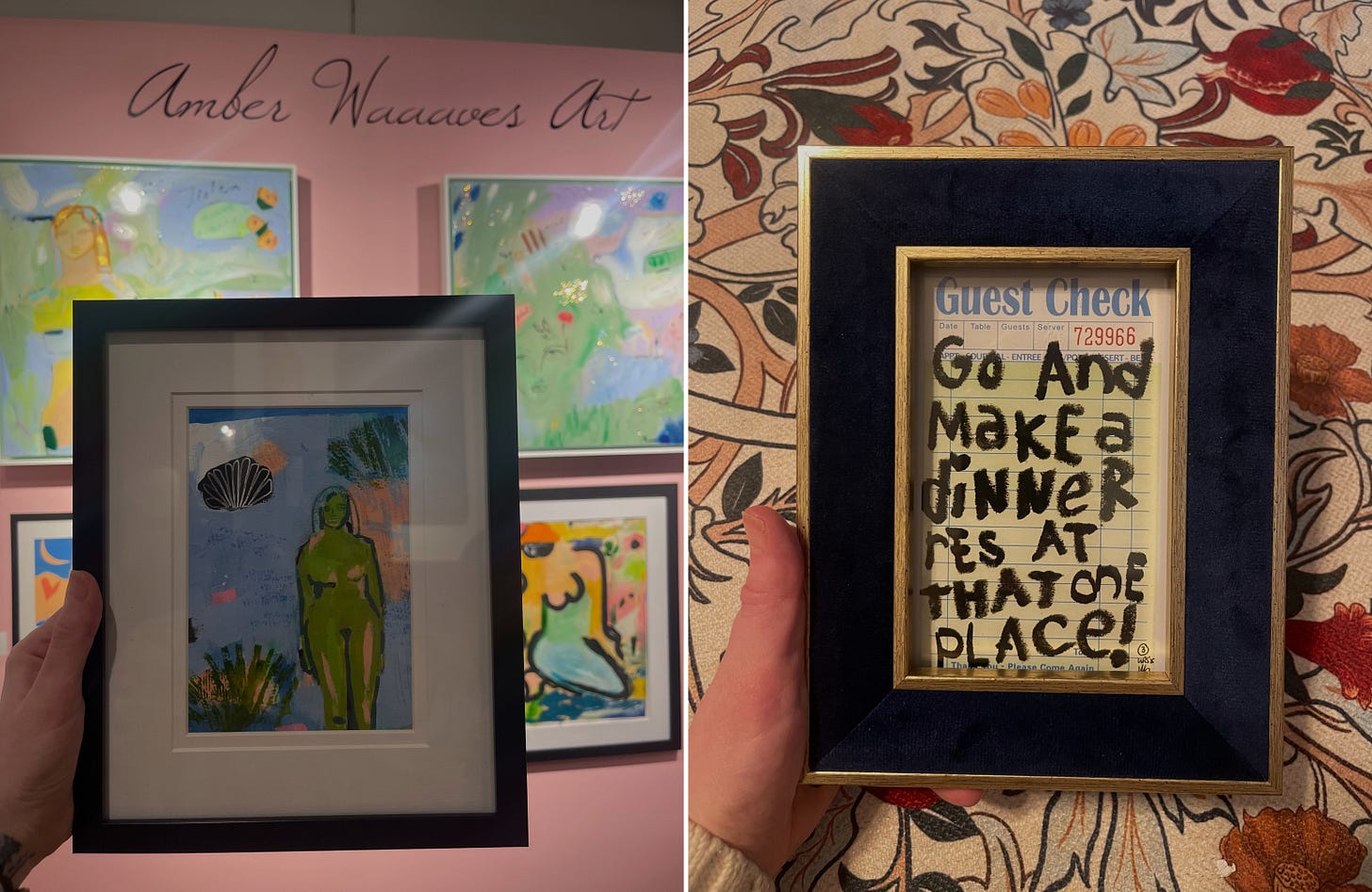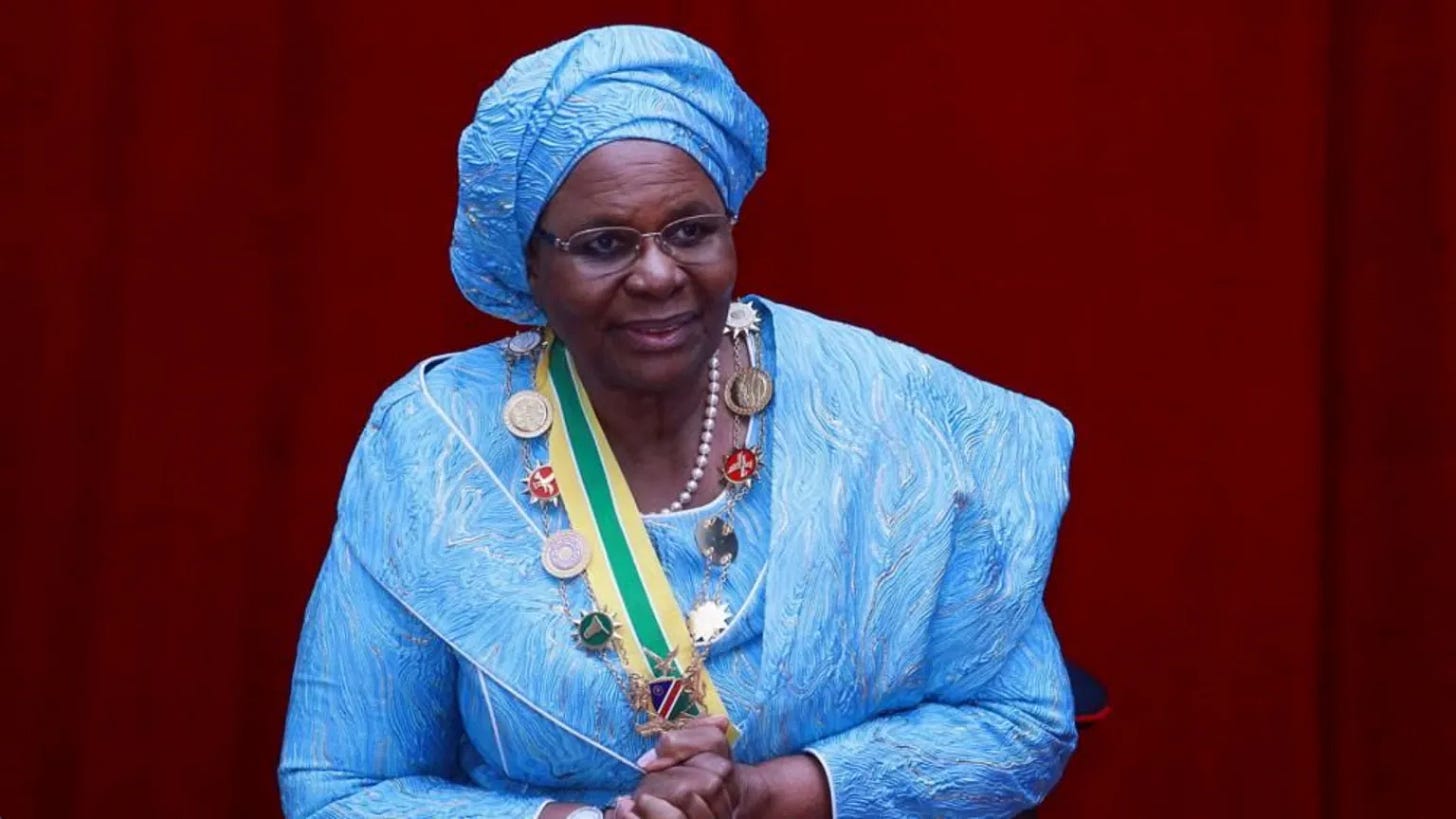Last weekend marked my first foray into The Other Art Fair in Chicago—SaatchiArt.com’s refreshingly down-to-earth answer to the high-gloss art circuit. Hosted in cities from Brooklyn to Melbourne, the fair assembles 100+ independent artists (many of them local), with each edition boasting a new roster of hand-picked talent.
Billed as an artist-led, accessible affair, it does exactly what it says on the tin. The vibe? Unfussy and engaging, with an appealing range of styles and a crowd that felt curious rather than cliquey. Even better, people were buying—always a reassuring pulse-check on the state of the arts. But perhaps the real joy lay in chatting directly with the artists themselves, the sort of encounters that remind you why fairs like this matter.
A few artists caught my eye—and heart—and I’d be remiss not to pass along the names:
Amber Waaaves Art: I came home with Seashells and Sprite, Figure 1, a dainty delight from her series inspired by mythical sea sprites. Think folkloric femininity, pastel tones, and a touch of enchantment—very much my aesthetic, as my perceptive friend pointed out.
Laundry Room Studios: Quarantine nostalgia meets witty observation in this text-driven series born from a craving for the ambient chatter of restaurants. Case in point: “I’m not super hungry, I just want like a little snack, you know?” Equal parts art and overheard brilliance.
Jayne King: A ceramicist and visual artist with an eye for the sculptural sublime. Her Sunset Over the Chicago Skyline vase is a showstopper—one of those pieces that demands its own pedestal (and probably a skylight).
Chloe Mccarrick: This London-based fine art photographer and mixed-media printmaker reimagines history through cyanotype. Her luminous blueprints honour pioneering women, giving a ghostly elegance to an already poetic 19th-century process. Quietly powerful, like the figures they depict.

In today’s letter: Namibia is led by three women at the helm, Afghan girls remain locked out of education, publicly-owned grocery stores are gaining traction in cities, Canadians are shunning travel to the US, and a couple more non-alcoholic brands to explore.
Namibia has made history by becoming the first African nation to have its top government positions with women at the helm. Netumbo Nandi-Ndaitwah recently became the country’s first female president, winning 58 percent of the vote, and Africa’s second-ever directly elected female head of state. Upon taking office, she appointed Lucia Witbooi as vice president and Saara Kuugongelwa-Amadhila as speaker of the National Assembly—both firsts for Namibia. In a further historic move, Nandi-Ndaitwah’s cabinet now boasts a majority of women, with 60% of ministers occupying key roles in finance, foreign affairs, health, education, and gender equality. Nandi-Ndaitwah, who emphasizes that her election was based on merit, not gender, sees her success as a symbol for other women and has vowed to focus on diversifying Namibia’s economy and reducing its national debt.
Marine Le Pen, leader of France’s far-right National Rally, was found guilty of embezzlement by a Paris criminal court on Monday—an outcome that carries a five-year ban from holding public office. The ruling has triggered a political stir across the country, leaving one of France’s most prominent and polarising figures sidelined and setting the stage for a potential democratic reckoning.
Bangladesh’s garment sector is facing a sharp blow as Trump imposes a 37 percent tariff on exports to the U.S., jeopardizing an $8.4 billion trade relationship. For a market deeply tied to American buyers, the fallout could mean factory closures, job losses, and heightened pressure on suppliers to absorb costs. Dhaka is exploring solutions, from tariff negotiations to boosting U.S. cotton imports to rebalance trade. But with brands eyeing alternatives and production costs rising, the stakes are high—not least for the country’s four million garment workers, many of them women, already strained by dwindling support from civil society groups weakened by U.S. foreign aid cuts.
In northern Kenya’s arid Marsabit region, where climate change has exacerbated droughts and food scarcity, child marriage and sexual violence have surged as desperate families trade their daughters for dowries in a bid to survive. Women and girls, already burdened with the task of securing dwindling water supplies, are facing increased vulnerabilities. As livestock perish and land grows barren, families marry off their daughters in exchange for a few camels and goats—an arrangement that may offer temporary relief but carries lasting consequences. Alongside this, the region has seen a rise in sexual violence, particularly as women are forced to travel farther for resources, often finding themselves alone and exposed. These stories highlight the harsh intersection of climate change and gender inequality, with women and girls bearing the heaviest burden in an already fragile environment.
As spring marks the start of a new school year in Afghanistan, millions of girls continue to face a stark reality: the Taliban’s ban on secondary and higher education remains in place for the fourth consecutive year, leaving at least 1.5 million girls without access to education. Despite the overwhelming challenges, many continue to pursue online education, holding onto hope for a brighter future. The international community must increase pressure on the Taliban to end these unjust restrictions and ensure that Afghan girls no longer have to wait for their dreams to be realized.
India has swiftly dispatched aid to Myanmar following last week’s earthquake, sending food, medical teams, and search-and-rescue units. Beyond humanitarian concerns, the move underscores New Delhi’s strategic intent: stabilizing its neighbor while reinforcing its role as a regional power in global crisis response. Beijing also quickly sent first responders and pledged $13.76 million in aid. These countries are filling the void where USAID should/would have been.
As food prices rise and grocery store consolidation leaves many in the lurch, a new idea is gaining traction: publicly owned grocery stores. New York City mayoral candidate Zohran Mamdani is pushing for a pilot program with one city-run store per borough, following in the footsteps of cities like Madison, Atlanta, and Chicago. Proponents argue these stores could offer affordable staples, breathe life into underserved neighborhoods, and pressure private grocers to drop their prices. But the devil is in the details—securing competitive wholesale rates against retail giants is no small feat. Chicago’s shift from a public grocery plan to a city-run food market highlights the hurdles. Still, for Mamdani, public grocers shouldn’t just be a safety net—they could become a genuine alternative to price-gouging corporate chains. With antitrust laws loosening and monopolies squeezing out independents, a public option might just be the pragmatic fix—if cities are ready to make it happen.
Speaking of Zohran Mamdani - big fan of this Interview piece with him where 18 New Yorkers (including Chloë Sevigny) ask him questions.
Cory Booker breaks a 68-year-old Senate record with a 25-hour, 4-minute speech in protest of the Trump administration's policies. Incredible stamina.
Canadians are boycotting travel to the U.S (I don’t blame them), with advance bookings down over 70 percent and one in five travelers canceling plans in recent months. Given that Canada is the top source of international visitors to the U.S.—bringing in $20.5 billion in spending and supporting 140,000 American jobs last year—this is a problem. Canadians are taking that money elsewhere, and I am sure many other travelers will be following their lead.
‘Tattourism’—marking your travels with ink—is a trend I know well (having indulged twice myself). Now, Kimpton Hotels is getting in on the action, teaming up with Tiny Zaps to offer complimentary tattoos to guests over 18 at select U.S. properties. Consider it a more permanent souvenir than a hotel key card—just choose your design wisely.
When I quit drinking in 2019, non-alcoholic options were scarce, and I can't help but wonder why I didn’t launch a brand back then. Fast forward to today, and the market is brimming with intriguing new contenders. Take Dry Wit from Minneapolis, which combines foraged botanicals and juice, like white pine needles with verjus, rice vinegar, and salt in its Pippi blend. Meanwhile, Copenhagen's Muri takes a similar approach, crafting blends like Sherbet Daydream with Douglas fir shoots and Passing Clouds, which features dried woodruff. A much-needed refresh, indeed.
I’m actually quite surprised that NYC has only just welcomed its first cooperatively owned lesbian coffee and cocktail bar. It's certainly on my list for when I’m there in a few weeks, alongside the soon-to-be reopened Frick Collection which looks absolutely stunning.
This weekend’s agenda? Tracking down the new museum issue of The PIN–UP. Guest editors Fredi Fischli and Niels Olsen ask two pressing questions: is the museum a temple of imagination or a mausoleum for culture? Essential or obsolete? As a staunch pro-museum advocate, I’m intrigued—but I’m willing to hear the opposition’s case.
Hermes is now popping up on TJMaxx.com?! (and someone actually bought that item in the past 12 hours).
The Oxford English Dictionary has opened its linguistic borders once again, welcoming 42 borrowed words from around the globe. Among the new arrivals is gigil—a delightfully specific Tagalog term that captures the almost unbearable urge to squeeze something unbearably cute. Proof, perhaps, that even the English language occasionally gets lost for words.
Have a great weekend. Stay interested and interesting.
Jennifer
xxx







